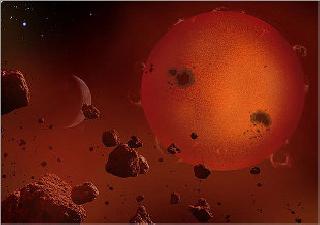
NEW HAVEN, US (BNS): A team of astronomers has found that the concentration of red dwarf stars in the cosmos is much higher than previously thought, which in turn, has not only increased the total number of stars in the Universe but also possibly the planets that orbit such stars.
The discovery of these red dwarfs – small, dim stars compared to the stars like our Sun – in eight nearby massive elliptical galaxies of Milky Way was made by astronomers using instruments on the Keck Observatory in Hawaii.
This discovery has swelled the total number of stars in the Universe to about three times than previous estimations.
“No one knew how many of these (red dwarf) stars there were. Different theoretical models predicted a wide range of possibilities, so this answers a longstanding question about just how abundant these stars are,” said Pieter van Dokkum, a Yale University astronomer who led the research.
The team discovered that there are about 20 times more red dwarfs in elliptical galaxies than in the Milky Way, said Charlie Conroy of the Harvard-Smithsonian Center for Astrophysics, who was also involved in the research.
The new discovery is also likely to give more clues about the composition and evolution of other galaxies.
“We usually assume other galaxies look like our own. But this suggests other conditions are possible in other galaxies,” Conroy said, adding that the latest discovery could have a major impact on our understanding of galaxy formation and evolution.
The new finding also now increases the chances of discovering exoplanets orbiting the red dwarf stars with some of them might also harbouring life, said van Dokkum.
In fact, a recently discovered exoplanet that astronomers believe could potentially support life orbits a red dwarf star, called Gliese 581.
“There are possibly trillions of Earths orbiting these stars,” van Dokkum said, adding that the red dwarfs they discovered, which are typically more than 10 billion years old, have been around long enough for complex life to evolve.
The new finding appears in the advanced online publication of the journal Nature.
 Previous Article
Previous Article Next Article
Next Article












The Indian Air Force, in its flight trials evaluation report submitted before the Defence Ministry l..
view articleAn insight into the Medium Multi-Role Combat Aircraft competition...
view articleSky enthusiasts can now spot the International Space Station (ISS) commanded by Indian-American astr..
view article